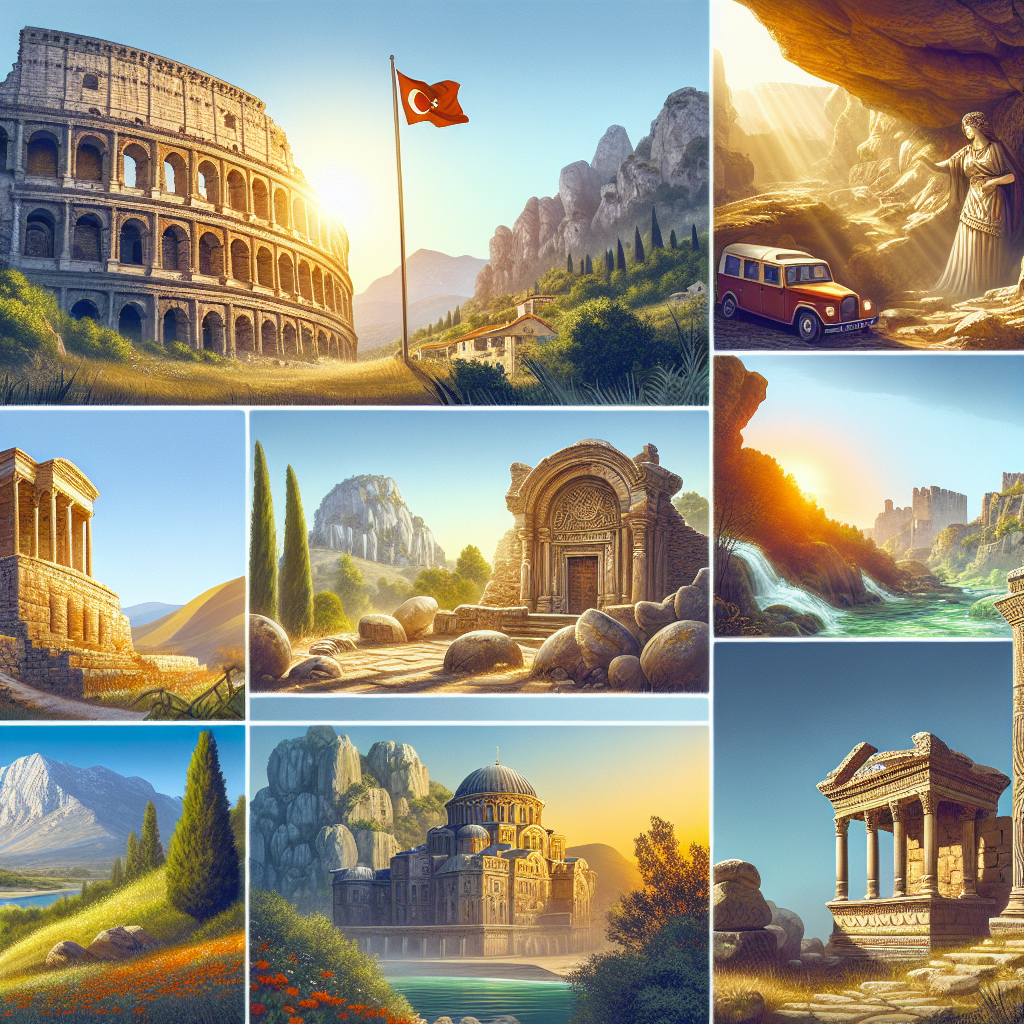10 Must-Visit Historic Sites in Turkey for the Young Explorer
Turkey, a country where the East meets the West, offers an unparalleled blend of culture, history, and natural beauty. For the young explorer eager to delve into the depths of ancient civilizations and witness the grandeur of empires that have shaped the modern world, Turkey presents a treasure trove of historic sites. Here are ten must-visit sites that encapsulate the rich tapestry of Turkey’s past.
1. Hagia Sophia, Istanbul
Originally a cathedral, later a mosque, and now a museum, the Hagia Sophia stands as a testament to the complex religious history of Turkey. Its massive dome and stunning mosaics make it an architectural marvel of the Byzantine Empire. Walking through its grand halls offers a glimpse into the past where Christian and Islamic symbols coexist, reflecting the cultural amalgamation that defines Istanbul.
2. Ephesus, Izmir
Ephesus is one of the most complete, still-standing Roman cities in the Mediterranean region. This ancient city was once a bustling metropolis and a critical center for early Christianity. The Library of Celsus and the Great Theatre, capable of holding 25,000 spectators, are highlights that transport visitors back to the glory days of Roman rule.
3. Cappadocia, Central Anatolia
The fairy-tale landscape of Cappadocia, with its whimsical rock formations and ancient cave dwellings, offers a unique glimpse into early Christian history. The Göreme Open Air Museum, a UNESCO World Heritage site, showcases churches carved into rocks with frescoes that narrate tales from centuries ago. A hot air balloon ride at sunrise provides a breathtaking perspective of this historical wonderland.
4. Topkapi Palace, Istanbul
Once the court of the Ottoman Empire, Topkapi Palace is now a museum that houses an extensive collection of artifacts, including Ottoman clothing, weapons, and manuscripts. Its ornate architecture and luxurious harem give a peek into the lavish lifestyle of Ottoman sultans.
5. Troy, Çanakkale
The legendary city of Troy, immortalized by Homer in the Iliad, offers a fascinating journey into ancient mythology and history. Although much of the city is in ruins, the reconstructed Trojan Horse and the remnants of the city walls evoke images of the epic battle that once took place here.
6. Sumela Monastery, Trabzon
Perched on the cliffs of the Black Sea region, the Sumela Monastery is a masterpiece of Byzantine art. Its remote location and the stunning frescoes adorning its interior make it a captivating site for those interested in the spiritual heritage of Turkey.
7. Hierapolis-Pamukkale, Denizli
Pamukkale, meaning “cotton castle” in Turkish, is renowned for its white terraces formed by mineral-rich thermal waters. Adjacent to this natural wonder is the ancient city of Hierapolis, known for its thermal baths and a well-preserved Roman theatre. Together, they offer a combination of natural beauty and historical intrigue.
8. Aspendos Theatre, Antalya
Regarded as one of the best-preserved theatres of antiquity, the Aspendos Theatre exemplifies the architectural genius of the Romans in Asia Minor. The theatre’s acoustics are so well-designed that visitors can hear a coin drop from the stage to the upper seating tiers.
9. Mount Nemrut, Adıyaman
The summit of Mount Nemrut is home to a collection of colossal statues representing the gods and rulers of the Commagene Kingdom. Erected in the 1st century BC, these statues are part of a royal tomb and sanctuary and offer a breathtaking view at sunrise.
10. Ani Ruins, Kars
Once the capital of the Armenian Bagratid Kingdom, Ani is now a ghost city with ruins that speak of its former glory. The Cathedral and the Church of the Redeemer are highlights, showcasing the architectural innovation of the medieval period.
Recreating the Experience or FAQ
Q: What is the best time of year to visit these historic sites in Turkey?
A: Spring (April to May) and autumn (September to November) are ideal as the weather is pleasant, and the tourist sites are less crowded compared to the peak summer months.
Q: How can I best prepare for a historical tour of Turkey?
A: Reading up on the history of the places you plan to visit can greatly enhance your experience. Additionally, packing comfortable walking shoes, sun protection, and a reusable water bottle will prepare you for extensive exploration.
Q: Are there guided tours available for these historic sites?
A: Yes, guided tours are available for most of these sites. They can provide valuable insights into the history and significance of the sites you are visiting.
Q: Can I recreate the historical experience outside of visiting the sites?
A: Absolutely! Visiting local museums, participating in cultural workshops (like Ebru painting or pottery making), and enjoying traditional Turkish cuisine can deepen your understanding and appreciation of Turkey’s rich history and culture.
Whether you’re a history buff, an architecture enthusiast, or simply a curious traveler, Turkey’s historic sites offer a fascinating journey through time. Each site, with its unique story and beauty, provides a deeper understanding of the civilizations that have shaped our world. As you explore these ancient wonders, you’ll not only witness the grandeur of Turkey’s past but also gain insights into the cultural and historical threads that weave through the present.
